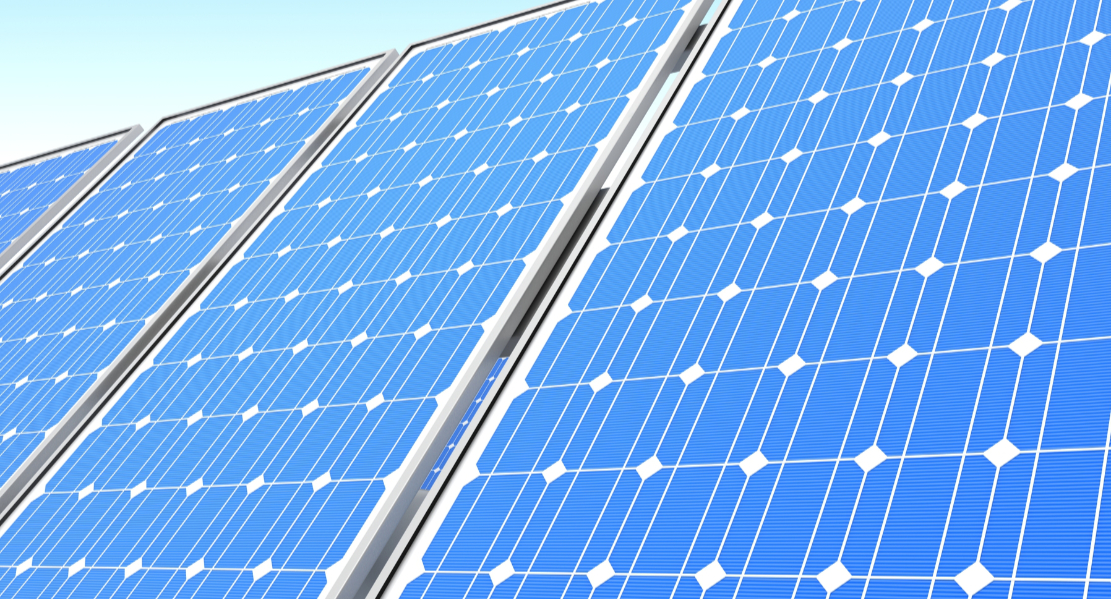
THE ADVENT OF PORTABLE POWER STATIONS (a.k.a solar generators) has made off-grid electricity a lot simpler that it was when I started my nomadic life. Batteries, charge controller, inverter, and metering all matched for each other and assembled in one box. Just plug in the folding solar panel and — tah-dah — electricity.
But some of us have reasons for doing it the old way, like needing more electricity than portable power stations can provide, or being in regions with lower levels of sunlight. Those needs often lead to using more than one solar panel. That’s when some additional knowledge is required.
What do you want to do with your panels?
There are different ways to connect multiple solar panels, and the way they’re connected changes their power delivery properties. Do you want faster battery charging? Do you want to run appliances that draw a lot of power? Do you want better charging in low sunlight? Do you want at least part of the panel array to keep working if one panel is in shade or goes bad? It would be great if you could have all of the above, but, like many things is life, there are tradeoffs.
So let’s look at three ways to wire multiple panels together: series, parallel, and a combination or series and parallel.
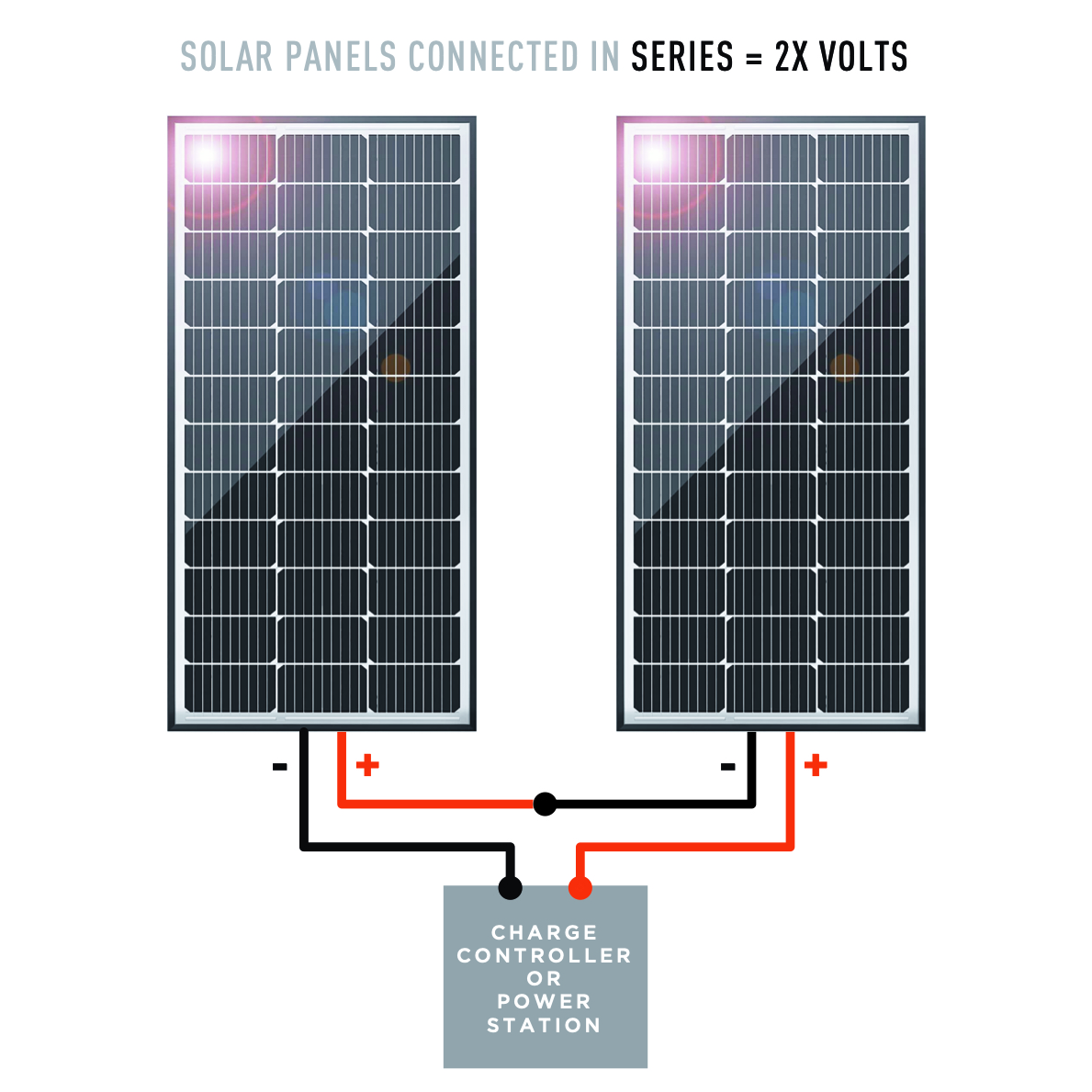
WIRING IN SERIES is like a continuous loop. The positive cable from one panel connects to the negative cable of the next, repeating that for however many panels you have. Then the remaining positive and negative cables connect to the charge controller or power station. This is easy to wire up since no additional connectors are required. And you can’t connect the cables incorrectly because the industry-standard MC4 connectors on solar panels connect only only one way: the male negative half to the female positive half.
Why series?
When solar panels are wired in series, the voltage of each panel is added together. This means that the total voltage of the array is higher than the voltage of any individual panel. For example, if you have two panels rated to produce 12 Volts, together they would produce 24 Volts. Three of those panels would produce 36 Volts, and so on.
Meanwhile, the amperage (the amount of electrical charge that is flowing through a system) is not multiplied. It remains the same.
There are various reasons you might want to make a 24V, 36V or 48V system, but I won’t get into them in this article. Suffice it to say, if you know you want a high voltage system then, wire multiple panels in series, or use a single high-voltage panel.
Why not series?
The problem with wiring in series is that when one panel is shaded or defective, it affects the whole array. It’s like old style Christmas lights where one bad bulb kept the entire string from working.
Also charge controllers are rated for the maximum voltage they can handle, so they need to be matched for the higher voltage produced by series wiring. If you’re building a new solar system, that only means you have another specification to check when buying a charge controller. But if you want to add a panel or two to your existing system, then you will most likely need to upgrade the charge controller.
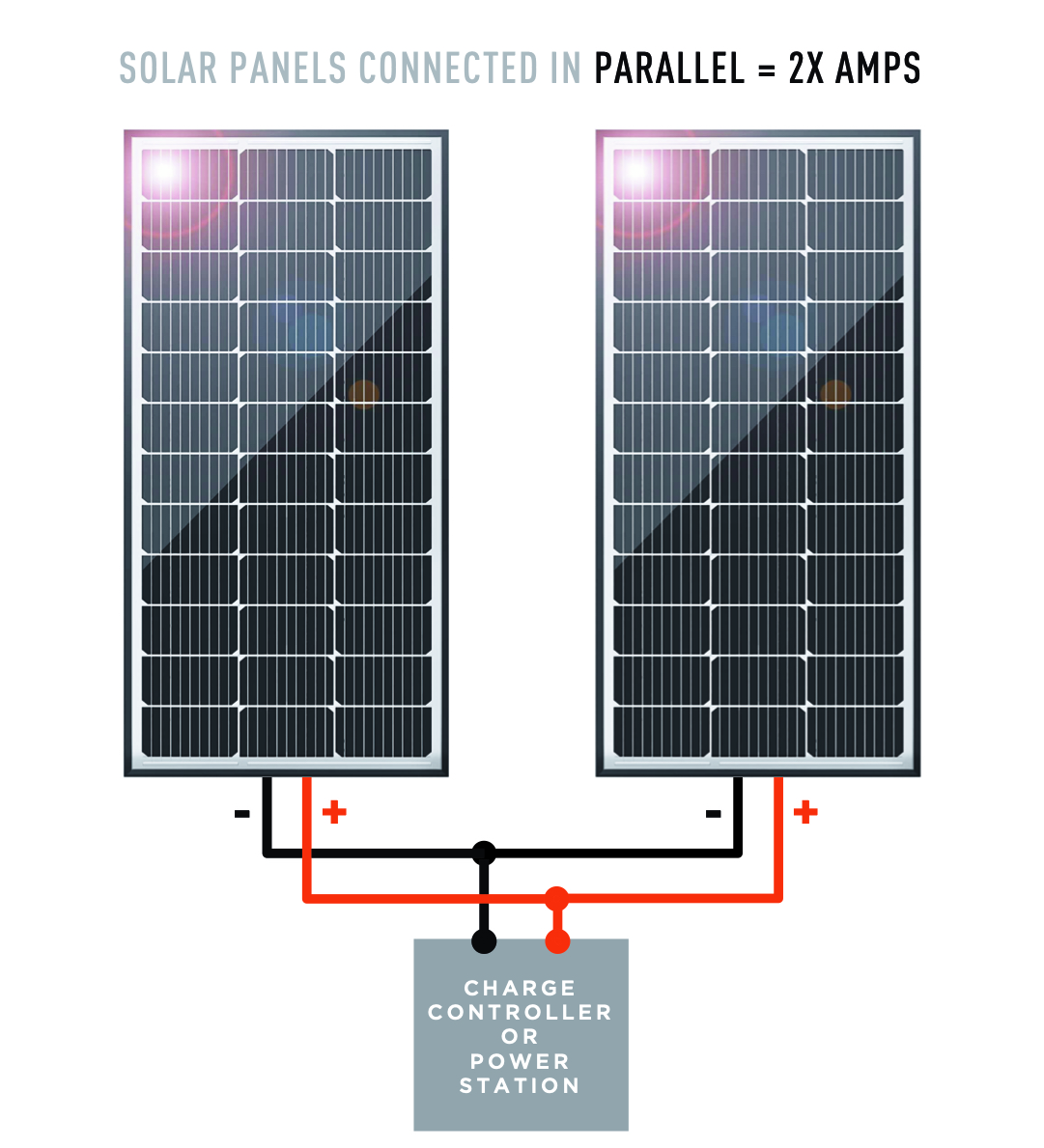
WHEN SOLAR PANELS ARE WIRED IN PARALLEL, all the positive cables are connected together and all the negative cables are connected together before being connected to the charge controller or power station. This is a more involved setup, requiring special connectors — one to accommodate multiple female and one for multiple male MC4 connectors.
Why parallel?
The first advantage of parallel wiring is that current flows through each panel independently of the other panels, so one shaded or defective panel doesn’t affect the others — like with modern Christmas lights.
With parallel wiring, the voltage is not multiplied but the amperage is. This is good when your goal is to power an appliance or charge a battery bank that requires a higher amperage.
Higher amperage (the amount of electrical charge that is flowing through a system) can also provide better performance in hot weather. Solar panels lose efficiency as temperature rises (one reason you should try to mount panels with an air gap underneath). As with Christmas light analogy, if one panel’s performance is hindered by heat it doesn’t affect the other panels.
Since each panel is working independently, it’s easier to troubleshoot the system. Individual panels can be disconnected to see if there is a change in performance. If necessary, the bad panel can be removed and replaced.
Likewise, more panels can be added to the system without sending too much voltage to the charge controller.
Why not parallel?
As mentioned above, parallel wiring is more involved, requiring more connections, which means more cost.
Wiring in parallel could be a negative if your goal is increased voltage. Meanwhile, the increased amperage might require higher gauge cables, which is also more expensive. And thicker cables are harder to bend and fit into confined spaces.
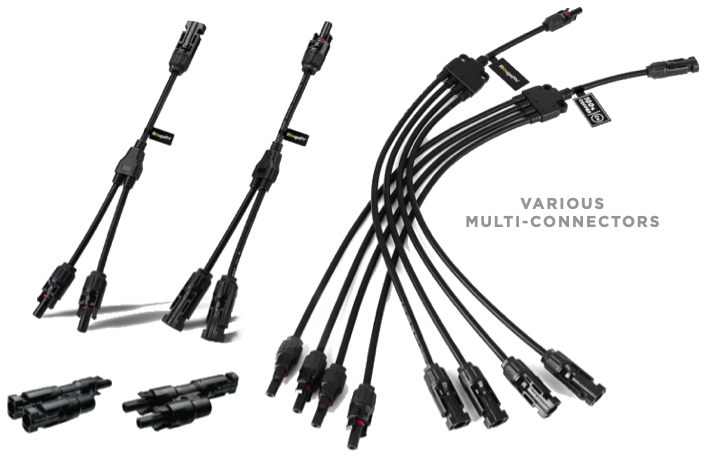
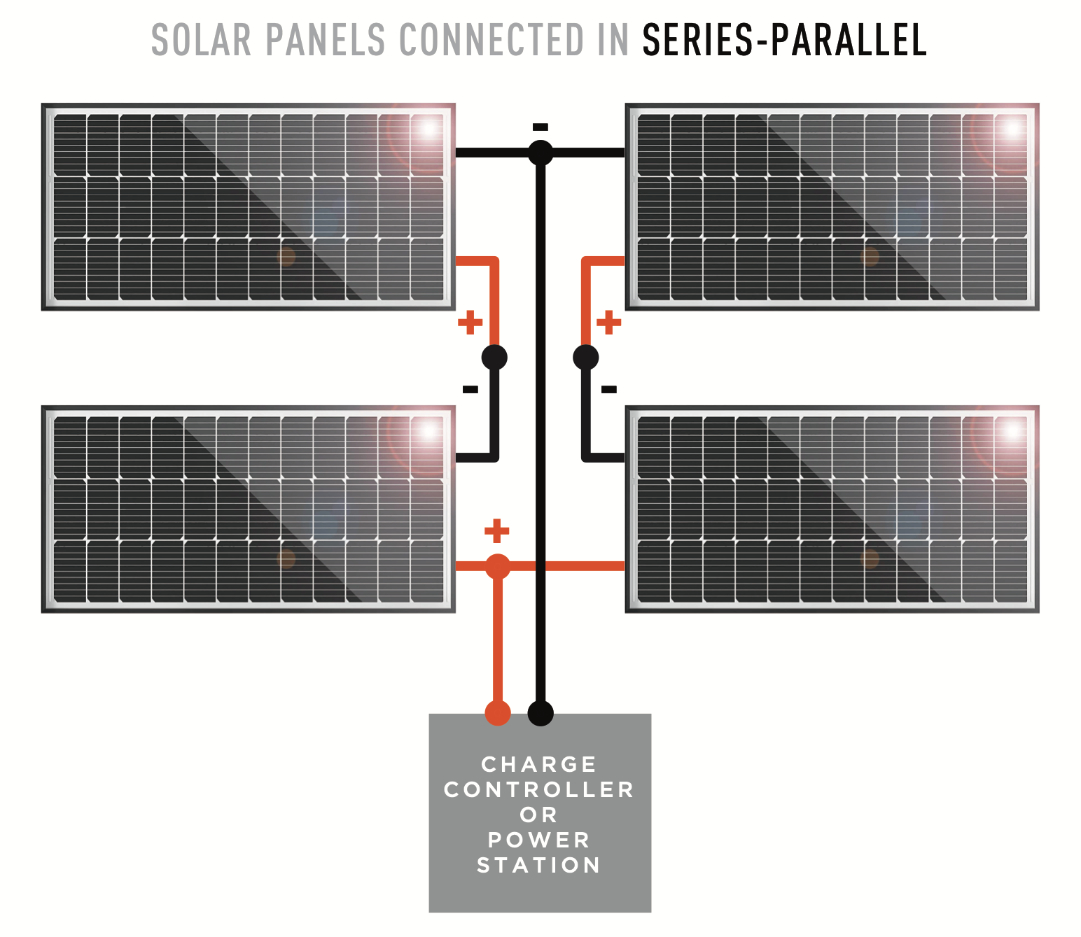
WHAT ABOUT SERIES-PARALLEL? As you might guess, using a combination of series and parallel wiring can achieve some of the benefits of both series and parallel. And it provides many ways you could totally screw things up. This is pro-level stuff. And it’s totally unnecessary for your typical nomad.
Conclusion
So, which is the best? Although it depends on your specific needs, I would say parallel wiring provides a more trouble-free system even though it’s more involved.
As for me, I’ve bypassed the entire series vs. parallel issue. I use a single a single huge panel.
What about you? What have you done or wish you had done? If you’re creating your first solar energy system, what are you planning to do? Has this article changed your mind?

I have been running solar since February of 2008 in a parallel configuration. I has worked flawlessly since that day. It also seems to be very shade tolerant. My feeling is that a person needs about 100 more watts than they actually need to be able to handle the normal incidental shade that happens in normal living. Your article was very well done and thank you for writing it.
I used a combiner box on the roof to simplify the parallel wiring a bit. It makes the parallel connections and provides a sealed entry through the van roof.
AL, how would U wire 2 huge panels like yours ?
I would do it in parallel. That’s assuming the two panels had identical specifications. My 270W panel puts out 36 Volts, which is plenty. Wiring another in series would jack the voltage up to 72V which would require a bigger, more expensive charge controller. Also, it wouldn’t make much sense to me to have all of that extra power shut down if one of the panels had a problem.
AL, thanks ! ??
I’ve been using solar panels for 6 years. I use Renogy 400W Source: https://www.propaneva.com/best-off-grid-solar-system We did add an in-line fuse and spare for the solar panel output cable and a battery terminal mounted fuse for the controller feed to the batteries. We have two 195Ah parallel 12V lead acid ‘house’ batteries and a separate group 27 starter battery with an ACR to combine them for charging only. The system works well and charges our batteries from around 60% SOC to virtually full in about 4 hours even with fridges, instruments, autopilot and other domestic loads while under way. Florida sunshine instead of fossil fuel.